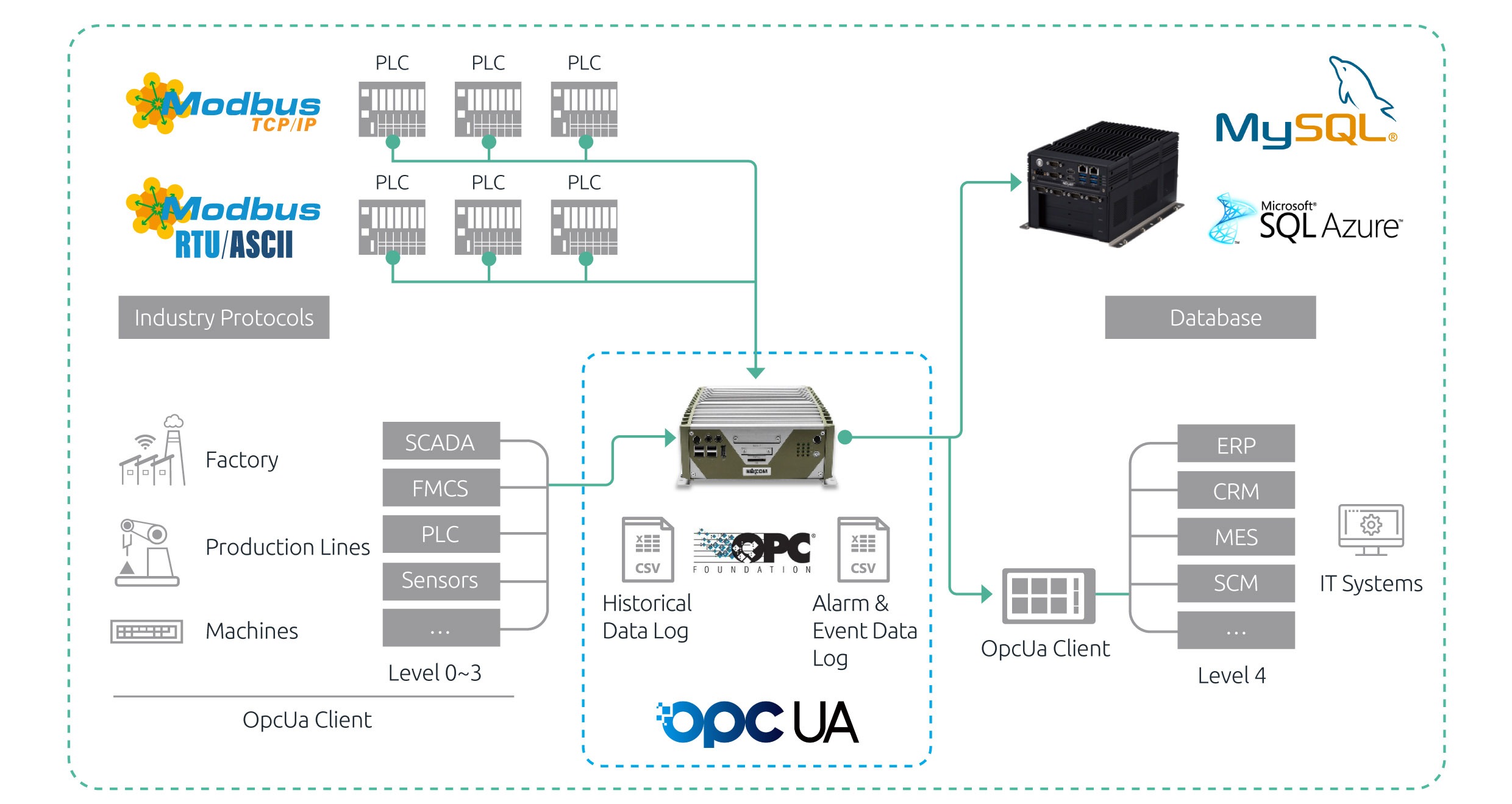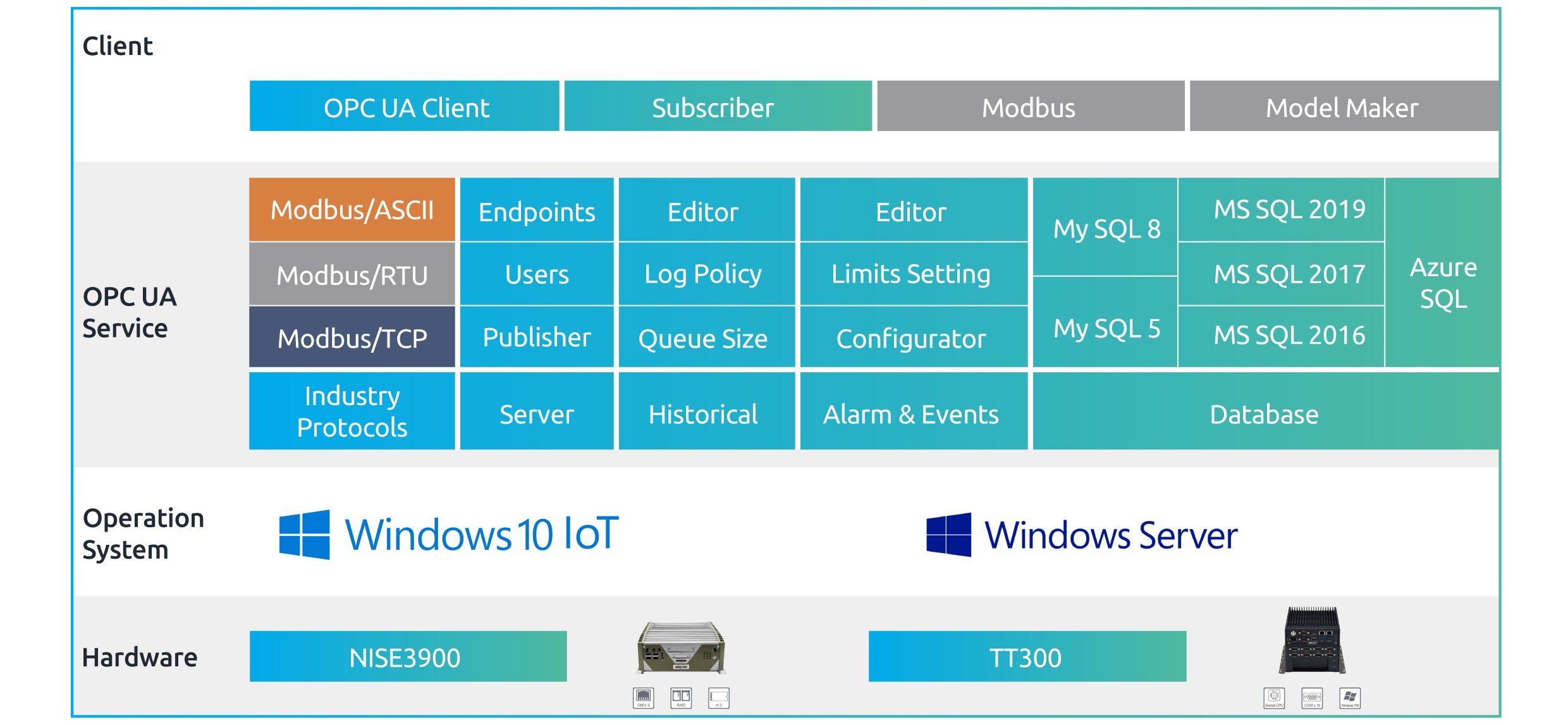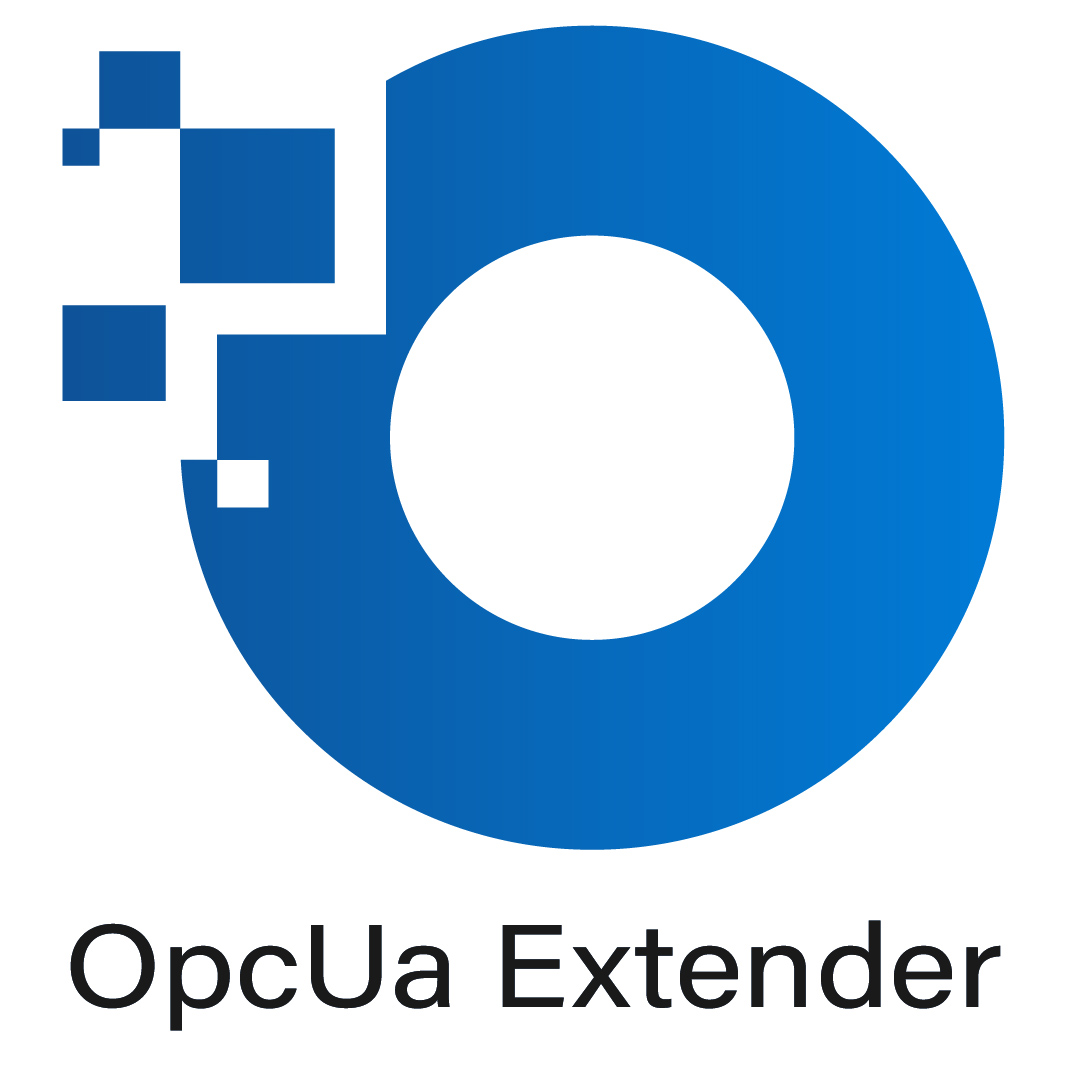


AIC OpcUa Extender Server


AIC OpcUa Extender Server is an Open Platform Communications Unified Architecture (OPC UA) server package focused on communicating with systems for data collection. Based on the OPC UA information model, we provide the platform required for information collection and allow users to leverage the serviceoriented architecture of OPC UA to organize their complex data into an OPC UA namespace. With features such as tag subscriptions and real-time updates, AIC OpcUa Extender Server plays a key role as a communication portal that allows OPC UA clients to manipulate HMI or PLC data. AIC OpcUa Extender Server consists of a configurable GUI for parameters and settings as well as an OPC UA server service to act as a hub for gathering data and sending them to OPC UA client applications, enabling a streamlined OPC UA system operation.
Introduction of OPC UA Extender Server
OPC UA is a set of industrial communication protocol standards that enable the exchange of digital data between machines (M2M). The development of OPC UA can be traced back to 1996. OPC (Open Platform Communications) of the OPC Foundation is a communication protocol standard for industrial automation. Devices conforming to the OPC standard send real-time data to the server through OPC, the user obtains real-time data through the client to complete the real-time monitoring equipment, which is based on the Microsoft system. It defines the objects required for programmatic control and factory automation, and can integrate software and hardware equipment management interfaces. It can be said that OPC UA is a protocol for industrial automation, which can integrate ERP, MES, SCM and other software services needed by electronic enterprises. Simultaneously, the data acquisition and monitoring system SCADA (supervisory control and data acquisition), HMI (Human Machine Interface), PAC (programmable automation controller), PLC (programmable logic controller), PC-based controller, DDC (Direct Digital Control) and other hardware devices in conducting M2M networking.
AIC OpcUa is AIoT Cloud OpcUa Standard Server, it consists of two parts, OPC UA Service & Configure Utility, and they are well developed for running on different operation system including Yocto Linux, Yocto, Windows 7, Windows 8.1 and Windows 10.
AIC OpcUa plays a key role as a communication gateway allowing OPC UA clients to access HMI or PLC data by subscribing to tags to receive real-time updates.
OPC UA Server is an OPC UA standard server package with the focus on communicating with systems for data collection based on the foundation of the infrastructure necessary for information integration where users can model their complex data into an OPC UA namespace, taking advantage of the rich service-oriented architecture of OPC UA. Configure Utility consists of a configurable GUI for parameters and settings as well as an OPC UA standard server service to act as a hub to collect data and feed its OPC UA client applications to help you with your OPC UA system development.
Is there a fee for the OPC UA Extender Server software?
The Community Edition is a permanent free version, the Standard, Professional, and Enterprise Business Edition are paid versions. You are welcome to use the free version first, download it now.
OPC UA Function
Based on machine to machine (M2M) communication processing, OPC UA is used to define data transmission between two or even multiple devices, which can be wired transmission or wireless transmission. It belongs to the function of Internet of Things transmission, not limited to smart devices and data exchange. It also includes digital signal transmission of sensors and actuators, which is transmitted from on-premises to the cloud after edge computing for complex factory data transmission and analysis operations. Under the trend of Industry 4.0, the development from automation to intelligence achieves the so-called “Smart Factory”, which has the ability to optimize the production process of the factory by itself and expand without human intervention. Moreover, it is able to track in real-time, the entire production process, life cycle, utilization rate, cumulative production value and innovation, all of which can deploy IoT for learning through OPC UA.
OPC UA development environment
It is an open standard unified architecture to standardize and simplify machine-to-machine (M2M) communication. It can work on any operating system, including, Windows, Linux, MacOS, iOS and Android. Moreover, it offers a comprehensive API interface to easily interface with different software applications. It is an independent platform that is not dependent on any programming language or application platform.
OPC UA Protocol Architecture
It provides two communication nodes, independent of the actual communication protocol, using TCP and HTTP for client-server and pub/sub, the bottom layer of OPC UA is a complete IP space, variable structure and warning mode. The second layer provides TCP and HTTP settings for the protocol layer. The third layer is the use of programming languages namely, Python, Java, .NET, and Ansi/C++ languages, and the fourth layer is the API connection layer. Three encoding methods are used: UA Binary, JSON, and XML are connected in accordance with the opc.tcp:// method.
The OPC UA unified architecture provides the following integrated content:
- Real-time data access specification (OPC DA):
It mainly collects real-time data on the equipment side and transmit it to the remote storage system by DCOM, such as MES, SCADA, etc. - Historical data access specification (OPC Hda):
For the historical data that has been archived on the device side, it is transmitted to the analysis application. - Warning event prompt specification (OPC A&E):
It can define the transmission rules of warning events and the conditions of variables. - OPC security protocol
Integrate all the dispersion provided by OPC in the past into OPC UA.

AIC OpcUa Extender Server
Community Edition Free! Software Package for Industrial Internet of Things
- Easy access to Modbus/TCP, Modbus/RTU and Modbus/ASCII devices.
- Multi-user Authentication by Windows logon and Certification.
- User-defined data structure & information model
- Full data logger, historical data access, alarm & event functions.
- Support up to 1000 client connections Convert and save data to MySQL, MS SQL, Azure SQL and .csv.
- Support Max historical queue size to 1000 in 500ms sampling rate.
- RESTful API for data access and node configuration.



